Iterative reverse and append
The iterative version of reverse is shown below. It
should be compared to
tailRecReverse.
The difference is that, instead of the tail-recursive call, there is
a start+ → repeat+ feedback loop, circulating
two values. The first is a list which initially arrives on the first input
of iterReverse, with each iteration removing another element.
The value is a list which initially arrives on the second input,
with each iteration adding the element to it. When the first value is
NIL, the value is returned.

The equivalent Lisp function is
(defun iterReverse (x y)
(do ((p x (cdr p))
(q y (cons (car p) q)))
((null p) q)))
iterReverse can now be used instead of
tailRecReverse in iterAppend, our new implementation
of append.
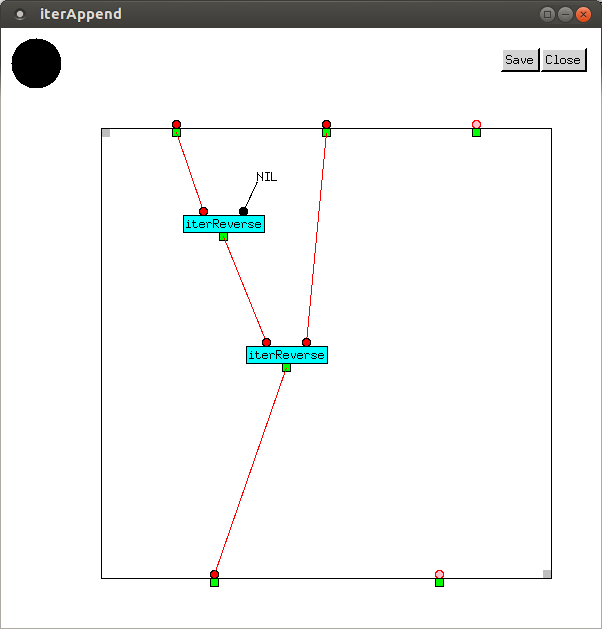
The output of the two functions is shown below.
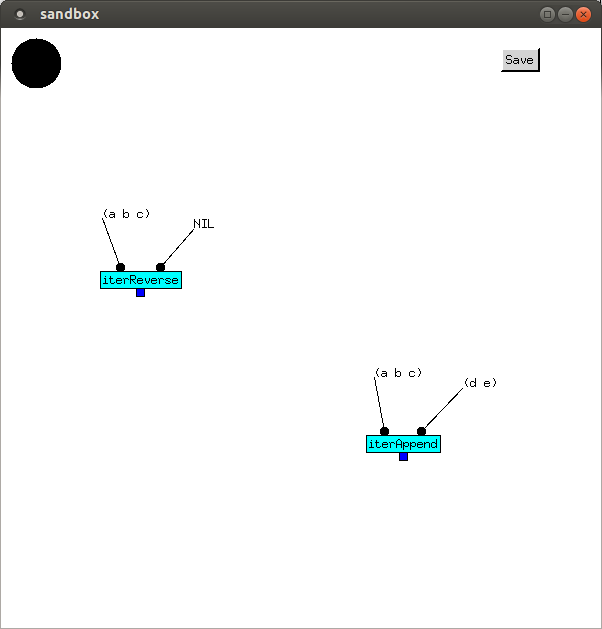
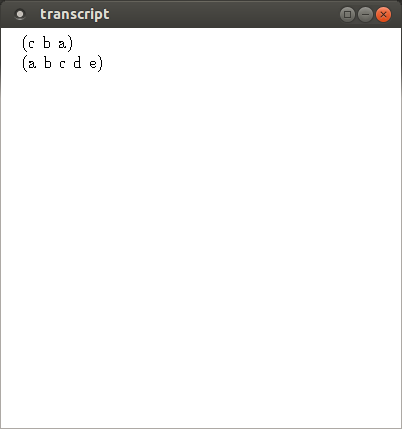
Iterative factorial
The pattern shown in iterReverse is repeated
in iterFac, an iterative implementation of the factorial function.
The new thing here is valve+, which outputs the values received
by its inputs, with the exception of its first value. Its purpose is to
provide constant values precisely once to start+.
Providing them directly to start+ would result in their being
output again whenever

The equivalent Lisp function is
(defun iterFac (n)
(do ((i n (sub1 i))
(f 1 (* i f)))
((zerop i) f)))

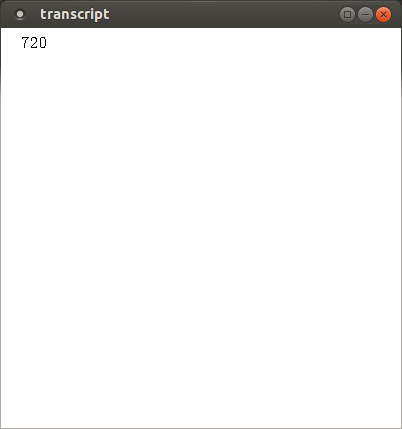
Iterative Fibonacci

The equivalent Lisp function is
(defun iterFibo (n)
(do ((i n (sub1 i))
(j 1 (+ j k))
(k 0 j))
((< i 2) (+ j k))))
fibo is called with input 10, followed by a
call to fibo mapped over the output of iota with
input 30, which is a list of integers from 0 up to, but not including, 30.
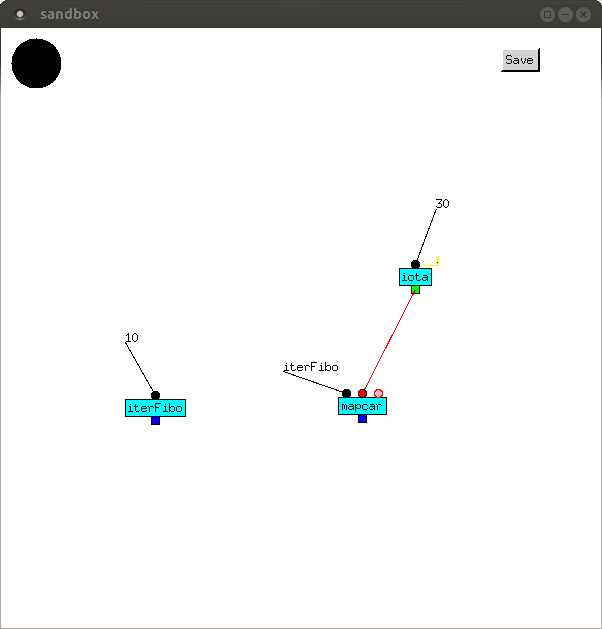
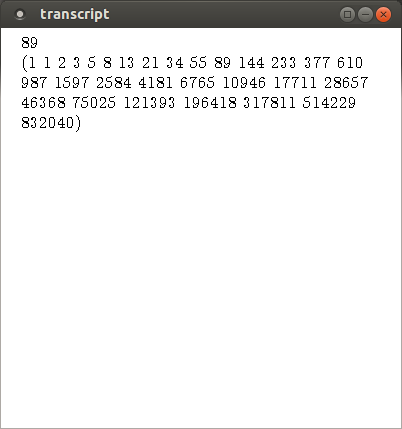
© Copyright Donald Fisk 2015, 2016